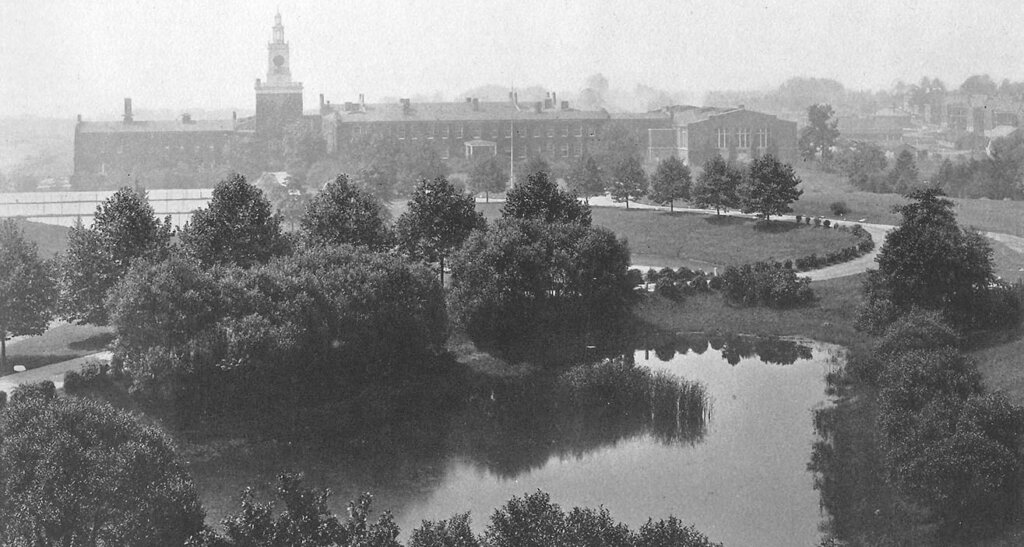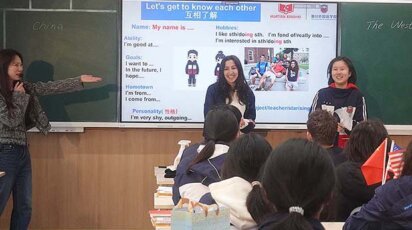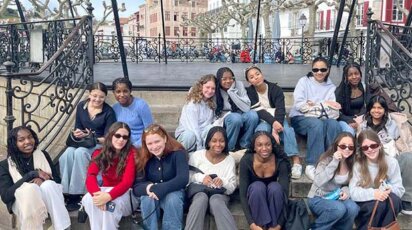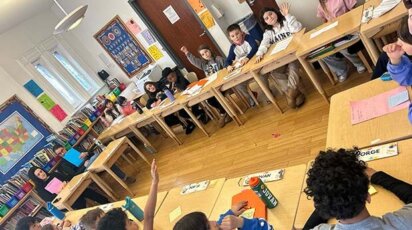News
Poly’s First Land Acknowledgement
The Native Studies SLT shows that a commitment to action can bring tangible change.
What is our collective responsibility as a campus-school community toward Native communities in the present day? Zoe Campbell ’25 has considered this question long before November’s National Native American Heritage month. She first thought of endeavoring to create a land acknowledgement for Poly in Grade 10. Becoming part of a Service Learning Team (SLT) at Poly is a pathway for many students to hone their leadership skills in areas of study or interest that mean the most to them–often with motivations tied to their identities and personal experiences.
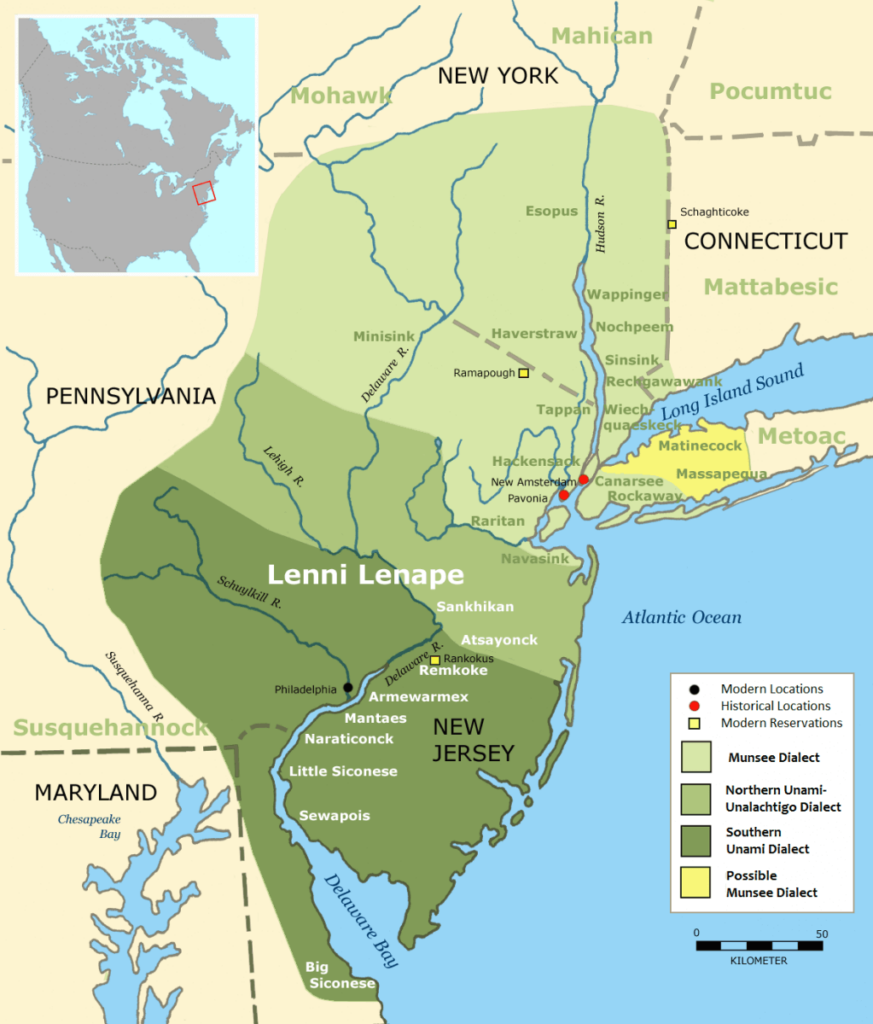
This fall, from late September through mid November, the Native Studies SLT advised by history teacher, Dr. Beth Eby, has sought to increase awareness of Native history and contemporary issues affecting indigenous communities. To that end, the small, but highly motivated six-member SLT group accomplished a grand feat–the creation of Poly’s first-ever land acknowledgement along with a proposal to create a community garden to honor indigenous peoples.
What is a Land Acknowledgment?
A land acknowledgment, as written on the official National Museum of the American Indian website, is “a traditional custom that dates back centuries in many Native nations and communities. Today, land acknowledgments are used by Native Peoples and non-Natives to recognize Indigenous Peoples who are the original stewards of the lands on which we now live.” Poly, as well as surrounding New York City, parts of Long Island, Hudson Valley, New Jersey, Northeastern Delaware, and Eastern Pennsylvania, are all historical territories of the Lenape peoples, the original inhabitants of the land.
Student Becomes Changemaker
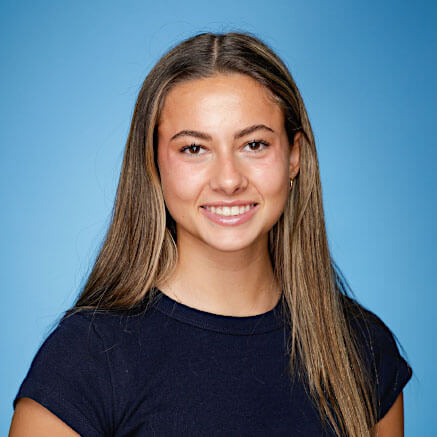
Zoe shared her motivation for the SLT and the vision for Poly’s land acknowledgment: “I started the Native American SLT as a way to share my Native heritage with my school community and make a meaningful impact surrounding Native issues and struggles. This journey has been completely self-driven but I have been committed to leave a lasting foundation for Indigenous awareness and appreciation at my school.”
Surprised by students’ lack of knowledge about Native history, coupled with an enthusiasm to learn, Zoe is determined to build a foundation for ongoing education and greater visibility for Native studies at Poly. “[The] issue isn’t a lack of interest,” said Zoe, “but rather the need for a greater institutional commitment to include these topics in conversation and curriculum.”
Zoe believes that the Dyker Heights campus and physical location necessitates reflection on its history–long before the school’s founding. “I was really surprised to learn we didn’t have one [a land acknowledgment], especially given Poly’s unique location and our strong emphasis on the significance of our land as a campus school in NYC. I hope this land acknowledgement serves not only as a respectful recognition of the Native peoples who came before us, but also as a catalyst for ongoing education and awareness. My goal is for it to inspire students and faculty to engage with Indigenous histories and consider our responsibilities toward Native communities today.”

A Lasting Garden on Horizon
While acknowledging the importance of the land acknowledgment as “a great first step in recognizing and honoring the land that Poly resides on,” Dr. Eby emphasized concerns about such acknowledgments being “performative and ultimately perpetuative of colonialism.” She added, “We decided that we wanted to create the garden in addition to the land acknowledgment to really demonstrate our commitment to the Lenape and have a physical manifestation of that commitment.”
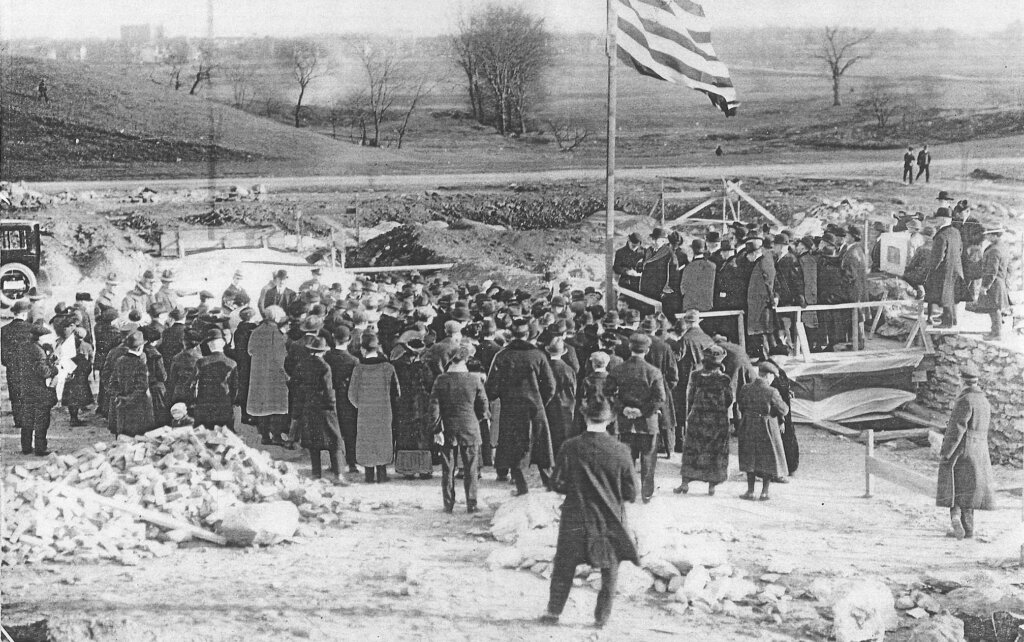
Native SLT Inspires and Connects
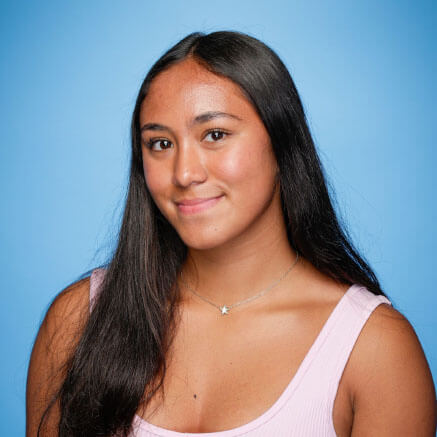
Hailey Wohst ‘26 joined the SLT to learn about a subject entirely new to her. The experience of being part of the group and what she has learned has left a lasting impression. “I joined the Native American SLT to expand my horizons…to be a part of something different and branch out of my comfort zone. By trying something new, I was able to work with people I would have never gotten the chance to and build something that would have a long-lasting impact on the Poly community.”
Additionally, inspired by her father’s past work with an indigenous community in Montana, Hailey wanted to gain a deeper understanding of her own. “I was also interested in joining the SLT because my dad had done a service trip in 1992 to the Rocky Boy reservation in Montana. His desire to help others of Native American descent inspired me. Throughout this project, I hoped to learn more about Native American people and their culture in New York and to find out more about the struggles Native people face,” she reflected. “And with the help of the members of this SLT, I was able to accomplish that.”
